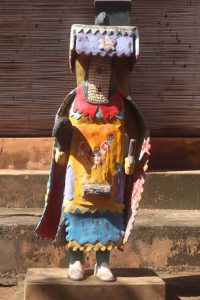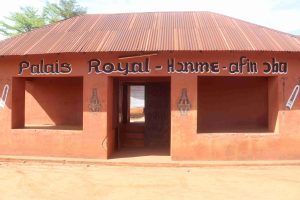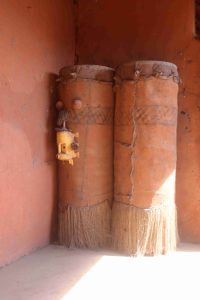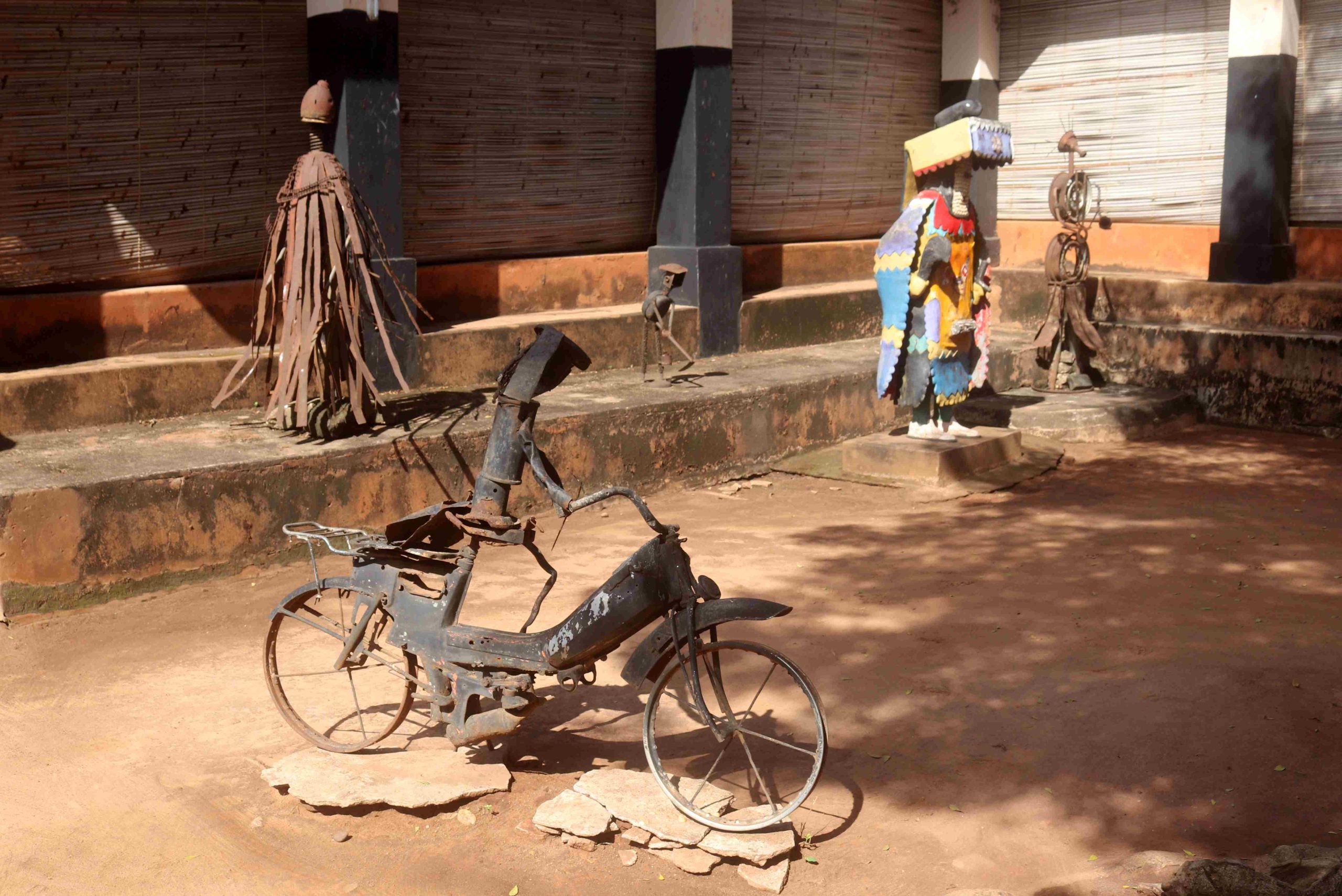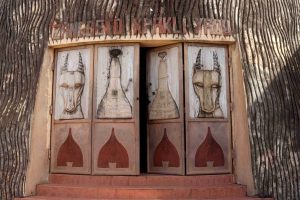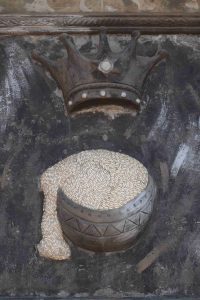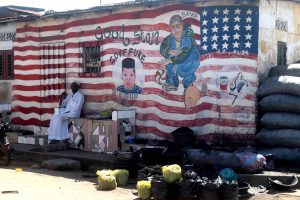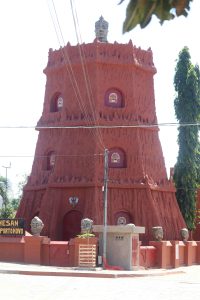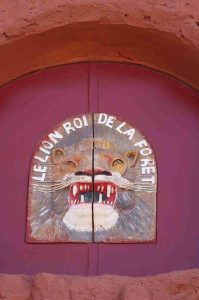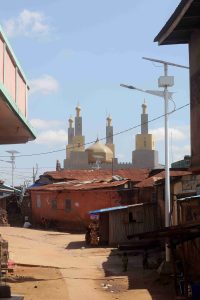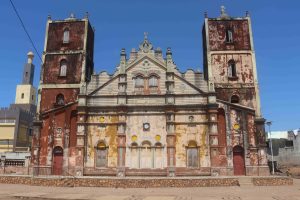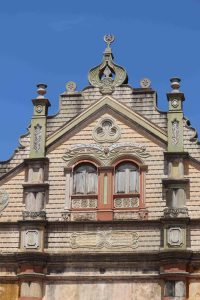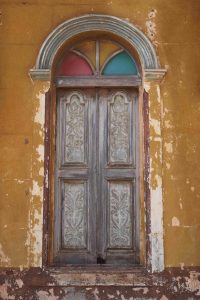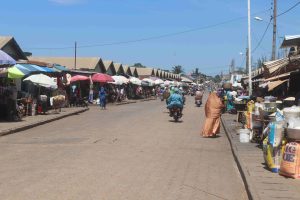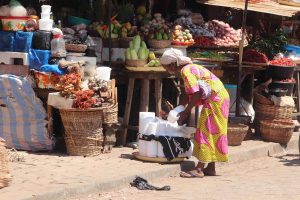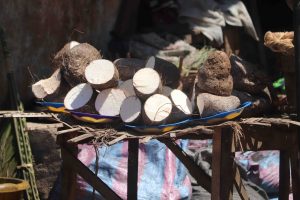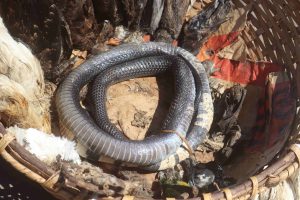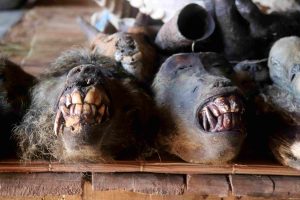We are still in Porto Novo, and we haven’t seen the only museum that is open, yet. So after a baguette with omelette and a dubious instant coffee in one of the street stalls around the corner of our guesthouse, we head to the Honme museum, the former royal palace of the rulers of the Hogbonu kingdom. This was an small kingdom, sandwiched in between the powerful Dahomey who covered most of present-day Benin and the various kingdoms in what is now Nigeria. The best-known from this dynasty was King Toffa – whose statue also dominates the central square -, because he was the one who signed the protectorate treaty with the French in 1863.
The museum is a collection of rooms used by the king and his entourage, a nice enough mud-walled building, and quite well maintained. Of the many artefacts that were supposed to be part of the museum, very few are left. In line with the usual paranoia, it is not allowed to take pictures inside, which in this case is not too much of a punishment. But: we have managed to visit a museum!
Potentially more interesting is the building opposite: this is the Zangbeto Kpakliyao, but I have also seen other names floating. This may be the ‘police headquarters’ that Profet was talking about yesterday, the place to which all the Zangbetos – the night watchmen, informal police – report to. Unfortunately, the building is closed, and there is nobody around. The neighbourhood here has quite a few decorated outer walls and doors, which we interpret as part of community, of family compounds. Not all of the wall paintings are about the family though, some have a more commercial look, like the barber shop’s American flag.
A little further is another temple, the Abessan temple. This is not a Voodoo temple; it is associated with the first settlement of Porto Novo, in the 15th Century. I found two conflicting stories, one claims that Abessan was the nine-headed deity considered the Queen of the Yoruba, who, apparently, was spotted here by three Yoruba warriors. The other also talks about the three Yoruba warriors who arrived here, and decided to stay, after which the wife of one gave birth to nine children, and took the title Abessan. Whatever, obviously an important place for the city, so important that the red-ochre temple from sand, resembling a termite mound, was recently restored. A sign outside says that the complex was inaugurated in January 2023, that is two months ago! Once again, there is nobody to open a door or provide explanation.
Walking back brings us to yet another Voodoo temple, and to the Grand Mosque. The new building is visible from far, with tall grey-and-yellow minarets and an onion-shaped dome. But the old mosque, right next to it, is much more interesting. It looks a bit like a church, not unlike the one we saw in Ouidah. Apparently, this mosque – and by extension the one in Ouidah, with its Brazilian link, too, I suppose – was built by people returning from Brazil, who had no idea how a mosque should look like, but knew about churches. Makes sense.
Outside the two mosques is the market, always a favourite for me. Yet, here again, not everybody is in for a chat, many people are grumpy, don’t even answer to ‘Bonjour, comment ca va?’, the standard, obligatory opening to any conversation. Not as hostile as in Cotonou, perhaps, but far from fun, far from welcoming. Then, just as we decide to leave, Sofia spots a snake in a basket, and some pigeons. All dead. These turn out to be drying in the sun, to be added to the collection of a local Voodoo priest, who is hiding in the shade. We strike up a conversation – he has nothing of the hostility of the other people – and spend the next 20 minutes talking about ceremonies, watching some of his videos on his phone. And taking pictures of some of the other fetishes he has. Fascinating again, except that he also keeps some living animals, birds and rats and tortoise, in mini-cages, who are obviously suffering. So what Profet told us yesterday, that the three children of the Iroko tree that is at the base of Voodoo, plants, animals and humans, are equally important, doesn’t count for all animals. Yet, a fascinating encounter, once again.
Next: back to Cotonou
